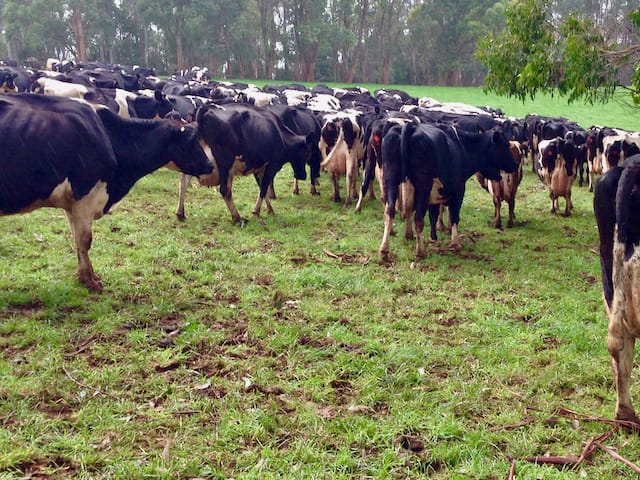Midwinter grazing management can be the most critical time of the year for setting up your spring pasture growth.
This significant time meets with challenging weather conditions. Weather conditions such as rain that causes soggy soil prone to pugging, low temperatures that stall pasture growth rates and short daylight hours reduce the ability for plants to harvest energy with photosynthesis.
The objective is to maintain or grow as much grass as possible and not destroy your feedbase going into spring. Therefore, this article will help you manage grazing in the winter that will contribute to a successful spring pasture.
A well-balanced midwinter Grazing Plan addresses three primary objectives:
- Reducing soil compaction and pugging and allowing preparation free-draining and consequently aeration.
- Setting up plants with large root systems promoting soil friability.
- Avoiding poor planning which leads to overgrazing or letting animals into paddocks too early.
Achieving these goals requires proper timing of grazing management strategies.
There are ways we can mitigate the downfalls of winter conditions. And no, I'm not going to suggest drying cows off and running them off-farm. I'm going to suggest an option worth considering for farmers with no feed pads, who winter milk and graze all year round. Please read on if this interests you.
Do you shut the gate behind your cows once they're in their paddock?
First of all, let's stop this.
Your animals will tell you if there is sufficient pasture and importantly, foot space.
If your animals walk home early and stand on concrete, what does this tell you?
You guessed it; the paddock is bordering on a mess with the pasture available depleted or soiled past a desirable level for consuming.
Cows walk and graze by nature. When pasture is depleted or soiled, your cows will continue to wander looking for fresh blades of grass. In a boggy paddock, this habit ends up in the spiral of death for your paddock (insert dramatic music here).
Letting your cows exit the paddock on their own accord goes a long way to preserving wet paddocks.
When hills are overly steep or soft on river flats, the easiest way to get cows out of a paddock before they destroy it is to leave the gate open.
This forces them to negotiate with their feet and in turn prevents cattle from walking your precious land into bogs.
Of course, this works best if you have something for your cows at the other end of the journey (eg: feed or be happy with your animals standing on concrete for a few hours waiting to be milked). The point is that when pasture options are exhausted or not present, having a voluntary exit point from the paddock is crucial for saving land.
On my family dairy farm, we've found some stark evidence that this practice works.
Per-cow production maintains. Lameness incidents decrease. And another benefit is that labour typically spent herding is diverted to other important tasks.
Gone are the days where paddocks would resemble a chocolate self-saucing pudding and spring felt like it would never arrive. And this last line is the best and perhaps a little too profound. The tender loving care of pasture over winter determines the timing and vigour of spring growth rates.
If the growth of spring is delayed by inaction and poor pasture management over the winter, the ability for the spring flush to be truly a wonderful time will be long gone, perhaps 4 weeks later than it really should be.
Managing stock rates in winter requires a detailed understanding of the needs of animal nutritional requirements over cold weather periods. If you plan on grazing stock over winter, it's best to be proactive because your livestock needs access to diverse feed resources if possible to meet production goals whether dry or milking.
But wait, isn't this about leaving the gate open during the wetter months when paddocks are prone to pugging.
Of course, it is, and the fundamental grazing and pasture management practices apply with matching stocking rate, pasture growth rate demand, and cows per square meter if not at any point in the year bar one time, then this it.
What are your experiences with leaving the gate open for the voluntary flow of cow traffic?
Until we meet again, Happy Farming!
- The Dedicated Team of Pasture.io, 2021-07-07

